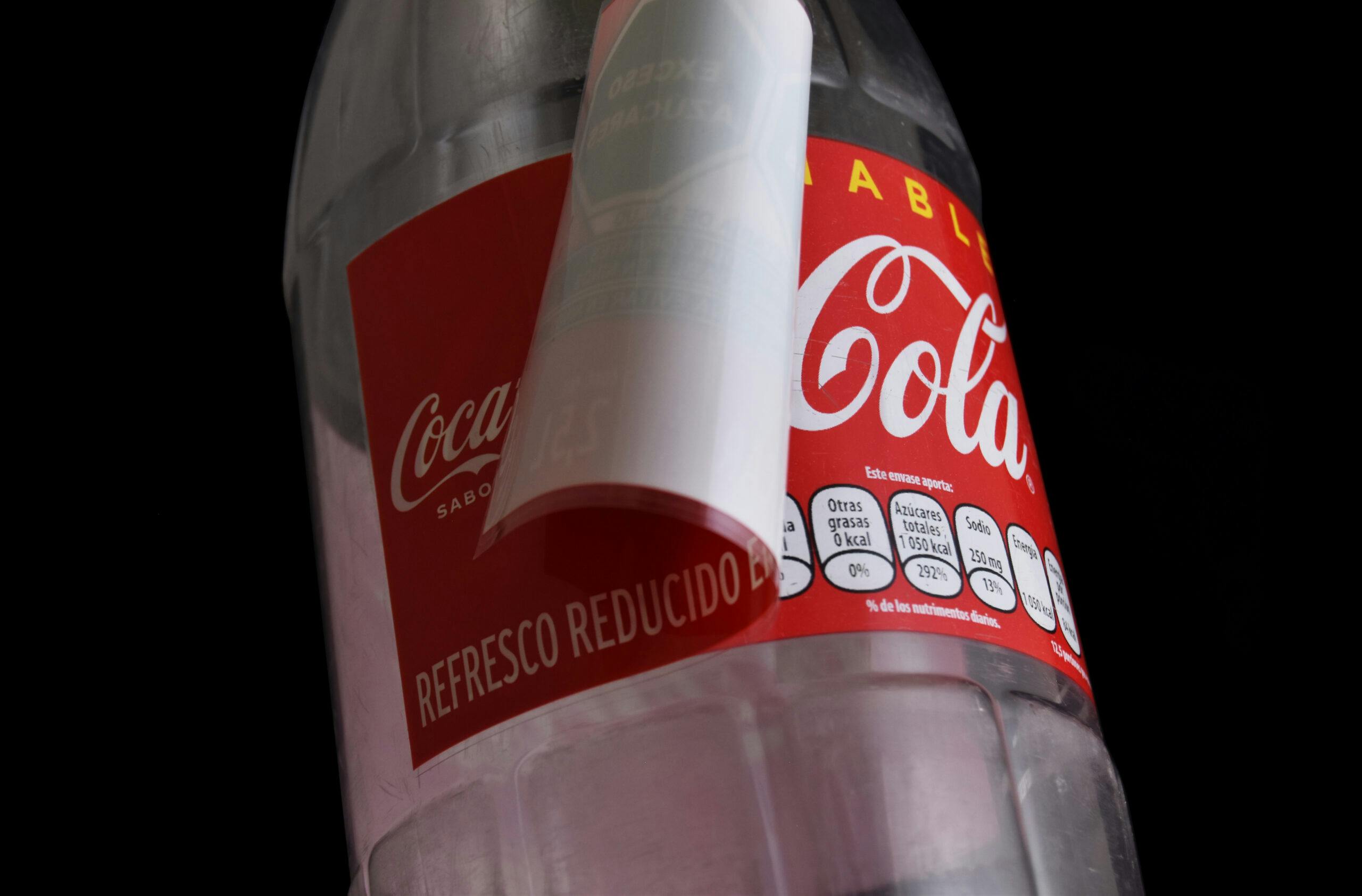Cases
Caustic-Resistant Cover-Up Labels Help Coca-Cola Quickly Meet New Labeling Laws
Coca-Cola is active in a huge range of markets around the world, each one with its own set of labeling laws and regulations. For such a wide-reaching brand, adaptability is key to stay on top of any legal changes that can affect production.

Share
That adaptability was recently put to the test when a new labeling law (NOM-051) was introduced in Mexico. The new law meant that Coca-Cola Mexico and its main supplier, Arca Continental had to act fast to adjust the labels on their returnable 2.5, 2, and 1.5-liter REF-PET Coke bottles. These bottles have durable, heat transfer labels that can be washed up to 30 times without peeling off or getting damaged.
While this is a huge advantage for the company, it usually means that when there is a change in laws or regulations, the bottle must be thrown away. In this case, throwing away the millions of bottles already in use would be very costly and could also potentially create a supply shortage. That’s why Coca-Cola Mexico decided they would try putting a pressure sensitive label on top of the old label instead, and they turned to MCC for help.
The challenge: a label that can cover and withstand
When the PET bottles are returned to Coca-Cola for processing, they need to be aggressively cleaned with caustic soda to remove any sugar glue and other substances left on the bottle. Coca-Cola Mexico determined that to keep the bottles already on the market in circulation for the rest of their useful life, the new label would need to be able to withstand between seven to eight caustic washes. At the same time, it needed to sufficiently cover up the old label so that the designs underneath would not be visible, and on top of that, be easy to apply for a fast turnaround.
The solution: extending the life of each bottle
The MCC Mexico team carried out several material tests, ultimately choosing a laminated label with a special adhesive that could hold up through the harsh caustic washes. The label was designed to be opaque enough to cover the graphics underneath and larger than the original so that it would cover it completely and ensure secure adherence to the bottle. This was key because if the label wasn’t affixed properly, the caustic wash could remove the label adhesive and ink.
Working within tight timeframes was another crucial element of this project. MCC moved swiftly so that Coca-Cola could successfully make the changes without any delays in production.
The result was re-labeled bottles that allowed us to continue operating within the framework of the law — we avoided the destruction of the bottleand the higher cost of buying new containers, and the most important thing is that we were able to continue selling and didn’t leave our customers and consumers with a shortage.
Juan Emilio Campos Alcalá, Purchasing Manager Other Business, at Arca Continental